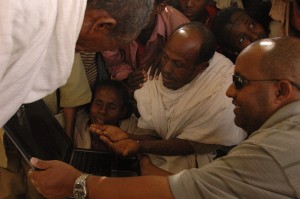Global Warming29
-

Insuring the World’s Poorest Farmers
Index insurance could help small-scale farmers build wealth and cope with climate change, but more accurate weather and climate data is needed for index insurance to catch on, writes Daniel Osgood, a scientist at Columbia University’s International Research Institute for Climate and Society (IRI). In a new piece in Nature Geoscience, Osgood and colleagues outline…
-

Celebrating the end of the Antarctic field season
It is the end of a highly successful field season for our ‘Antarctica’s Secrets’ team – a mix of sadness and joy
-
Floods in Eastern Sri Lanka and North-Eastern Australia: Contrasts in Disaster Risk Management
Due to the ongoing floods in Sri Lanka, more than a million people are affected, 185,000 were displaced and 16 had died by February 5, 2011. The impact has been most severe on Eastern Sri Lanka a “Disaster Hazard and Vulnerability Hotspot”. The purpose of this post is to publicize information resources to help target…
-

Glacial deposits: A clue to reconstructing the history of the Antarctic ice sheet
Having been joined by a fifth team member, Tim Flood from St Norbert College, our “Antarctica Secrets” team sets out to a new field site near Mount Achernar.
-

How to cross a crevasse zone on the Antarctic ice sheet
Back at the Central Transantarctic Mountain camp, our ‘Antarctica Secrets’ team figures out the best way to cross a crevasse zone to get to their next field camp at Mt Achernar.
-

In the Arctic More Than Elsewhere, Things Are Heating Up
According to a new international study, water flowing into the Arctic Ocean from the North Atlantic is the warmest it has been in the past 2,000 years.
-

Moraines and spaghetti in the Transantarctic Mountains
Our Antarctica Secret’s team starts collecting samples at their first remote field site at Mt Howe, Transantarctic Mountains, about 180 miles from the South Pole.
-

Setting up camp 184 miles from the South Pole
Our field team flies from McMurdo to their first base camp, named CTAM, which stands for Central Transantarctic Mountains. This camp is set up by the US National Science Foundation every 5 to 10 years, with input from scientists on the cutting edge research that can be done in the region.
-

Survival training in Antarctica – aka Happy Camper
Mike Kaplan and Nicole Bader, first-timers in Antarctica, report from taking their basic survival training at McMurdo Station in Antarctica, aka ‘Happy Campers’

By studying thousands of buildings and analyzing their electricity use, Columbia Climate School Dean Alexis Abramson has been able to uncover ways to significantly cut energy consumption and emissions. Watch the Video: “Engineering a Cooler Future Through Smarter Buildings“
